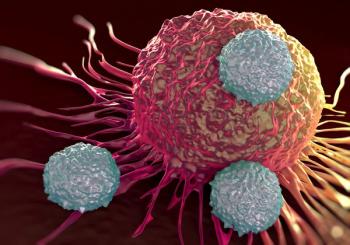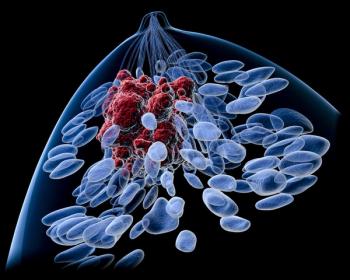
- Oncology Vol 28 No 4_Suppl_1
- Volume 28
- Issue 4_Suppl_1
(S009) Two-Year Outcomes Following Triapine Radiochemotherapy for Cervical Cancer
Here, we present the 1- and 2-year survival outcomes from patients with stage IB2–IVB cervical cancer treated with triapine radiochemotherapy.
Tracy Sherertz, MD, Rodney J. Ellis, MD, Steven Waggoner, MD, Kristine Zanotti, MD, Kimberly Resnick, MD, Mitch Machtay, MD, Charles A. Kunos, MD, PhD; Case Western Reserve University, University Hospitals of Cleveland, Summa Health System
Purpose: Phase I and phase II trials were conducted between 2006 and 2011 to investigate the use of triapine radiochemotherapy in the treatment of cervical cancer. Triapine (3-aminopyridine-2-carboxaldehyde thiosemicarbazone) is a strong inhibitor of ribonucleotide reductase, the rate-limiting enzyme that supplies deoxynucleotides for DNA synthesis. As such, it is thought to potentiate the antitumor effects of chemotherapy and radiotherapy. Here, we present the 1- and 2-year survival outcomes from patients with stage IB2–IVB cervical cancer treated with triapine radiochemotherapy.
Materials and Methods: Thirty-two women with clinical stage IB2–IVB cervical cancer were treated in phase I and phase II trials at a single institution with three times-weekly intravenous triapine (25–50 mg/m2) and once-weekly cisplatin (40 mg/m2) with concurrent daily pelvic radiation (45–54 Gy) followed by LDR cervical brachytherapy (30–40 Gy). Overall survival (OS) and recurrence-free survival were evaluated using Kaplan-Meier analysis.
Results: Median follow-up was 27.4 months (range: 2–90 mo). Twenty-eight patients had stage IB2–IIIB disease and were treated definitively, and four patients had known distant metastases at the time of diagnosis. One patient had a local recurrence (8 months), and seven patients developed distant recurrences (at 5, 5, 14, 23, 25, 26, and 52 months, respectively). All patients with stage IVB disease died of cancer-related causes (at 3, 13, 34, and 54 months, respectively). OS for all 32 patients at 1 and 2 years was 90.3% (95% confidence interval [CI], 80%–100%) and 86.4% (95% CI, 74%–99%), respectively. For the 28 patients with IB2–IIIB disease, OS was 92.6% (95% CI, 82.7%–100%) at both 1 and 2 years. Relapse-free survival (RFS) was 80.8% (95% CI, 76%–100%) at 1 year and 65.6% (95% CI, 59%–93%) at 2 years. Median RFS was 50.9 months. Severe toxicity occurring in the first 2 years included two patients (6.25%) with rectovaginal fistula, one patient (3.1%) with a cerebrovascular accident, and one patient (3.1%) with sigmoid colitis requiring surgery for diversion.
Conclusions: Two-year follow-up after triapine radiochemotherapy reveals favorable survival outcomes in women with stage IB2–IIIB cervical cancer. Further investigation comparing triapine radiochemotherapy with standard cisplatin radiochemotherapy is under way with a prospective randomized phase II National Cancer Institute-sponsored trial (NCT01835171) that has begun accrual.
Proceedings of the 96th Annual Meeting of the American Radium Society -
Articles in this issue
Newsletter
Stay up to date on recent advances in the multidisciplinary approach to cancer.

















































































